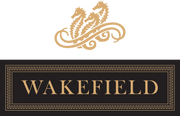
Our Story
Our Philosophy
We rest on the principle that the finest wines are those made with the greatest dedication and care. Above all our imperative is to 'respect the fruit'.
The Taylor Family Members
Mitchell Taylor
Managing Director and Third Generation Winemaker
Following in the footsteps of his father & grandfather, Mitchell oversees all aspects of the business along with playing an important role in crafting the wines.
Justin Taylor
Company Director and Export Manager
Justin's role covers the challenging area of developing new international partnerships & bringing the quality wines produced by the Taylor family to the world.
Clinton Taylor
Company Director and General Manager Winery Operations
Clinton's role encompasses the management of the all-important vineyard and production side of the family business operations in the beautiful Clare Valley.
Bill Taylor
Deputy Chairman
Bill's desire to create exceptional Australian wines that are in keeping with the finest from the 'old world' has formed the cornerstone of the Taylors family philosophy.
Winemaking Team

Mitchell Taylor
Managing Director and Third Generation Winemaker
As part of the third generation of Taylor family winemakers, Mitchell is resolute in his pursuit of perfection when it comes to crafting fine Australian wines.
Adam Eggins
Chief Winemaker
Adam's innovative approach & renowned skill & expertise in the craft of winemaking consistently earns critical acclaim for the wines produced at Wakefield.
Chad Bowman
Senior Winemaker
A true local, Chad was born & bred in the Clare Valley, and growing up surrounded by his family's vineyards, you could say wine is definitely in his blood.
Thomas Darmody
Winemaker
Growing up near Kapunda on the edge of the Barossa Valley, Thomas fell in love with the idea of making wine after an inspirational stint as a cellar hand during vintage 2012.
OVER 50 YEARS OF TAYLORS WINES
Our Heritage
The Taylor family's long-standing association with the Clare Valley begins in the late 1950's when as Sydney wine merchants, they partner with the Clare Valley Co-operative to bottle and distribute their own wines under the Chateau Clare label.
Then, inspired by the great producers of Bordeaux, and with a vision to craft wines that rival the best in the world, the Taylor family begin an exploration to find the perfect plot of land on which to establish their family estate. On July 21st, 1969, their quest brought them to a site by the Wakefield River in South Australia's Clare Valley. So on the same day that Neil Armstrong takes man's first steps onto the moon, Bill Taylor takes his first steps on the soil that will eventually become the family estate.
AUSTRALIA’S FIRST FAMILIES OF WINE
AFFW
We are proud to be founding members of AFFW. Together with the other eleven winemaking families of Australia, we represent a cohesive voice for the mastery, passion and legacy that form the foundations of the Australian wine industry. It is our desire to use this voice to encourage the future of Australian wine, and ensure that the real story of our nation's most iconic wines are always shared.
Learn more




